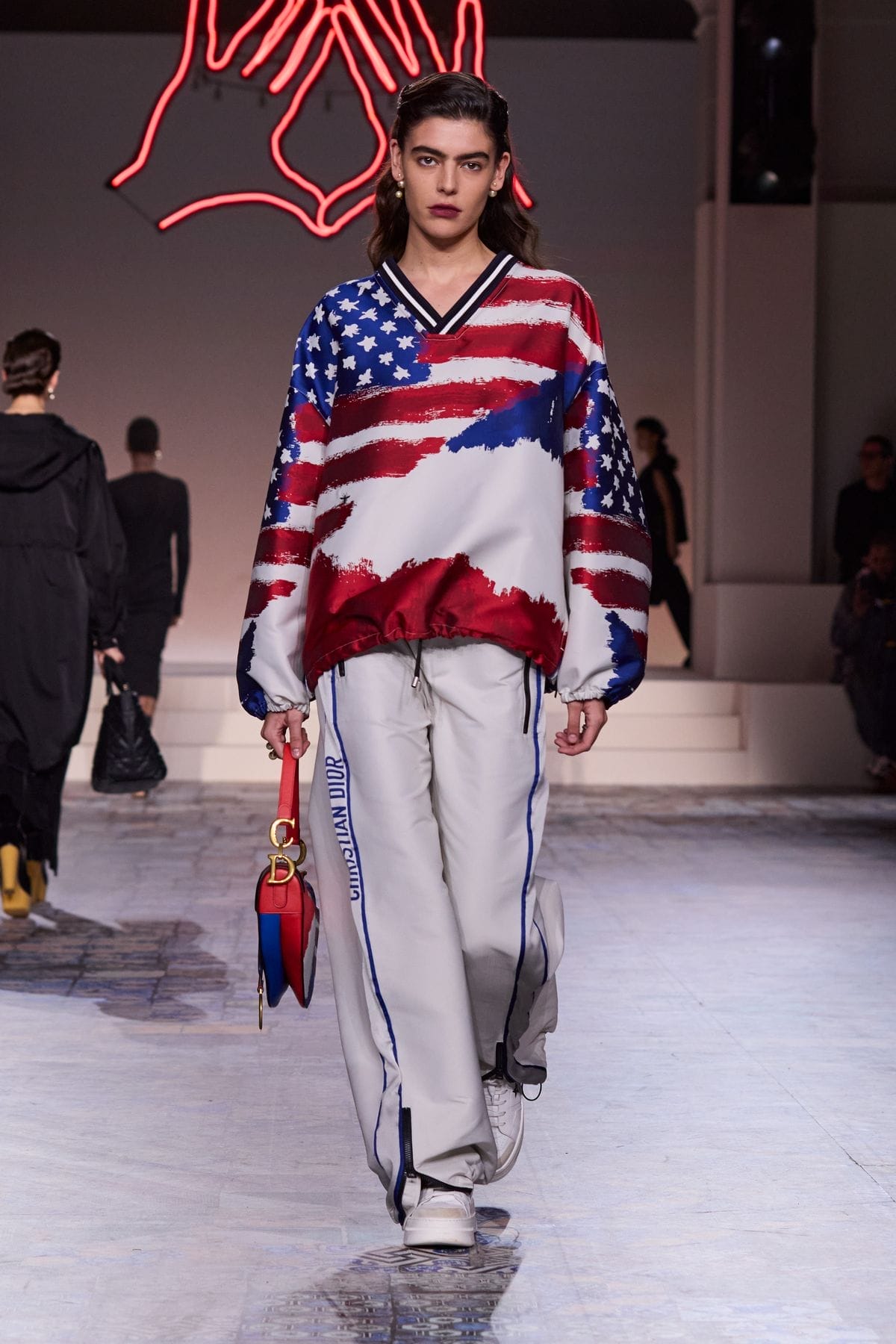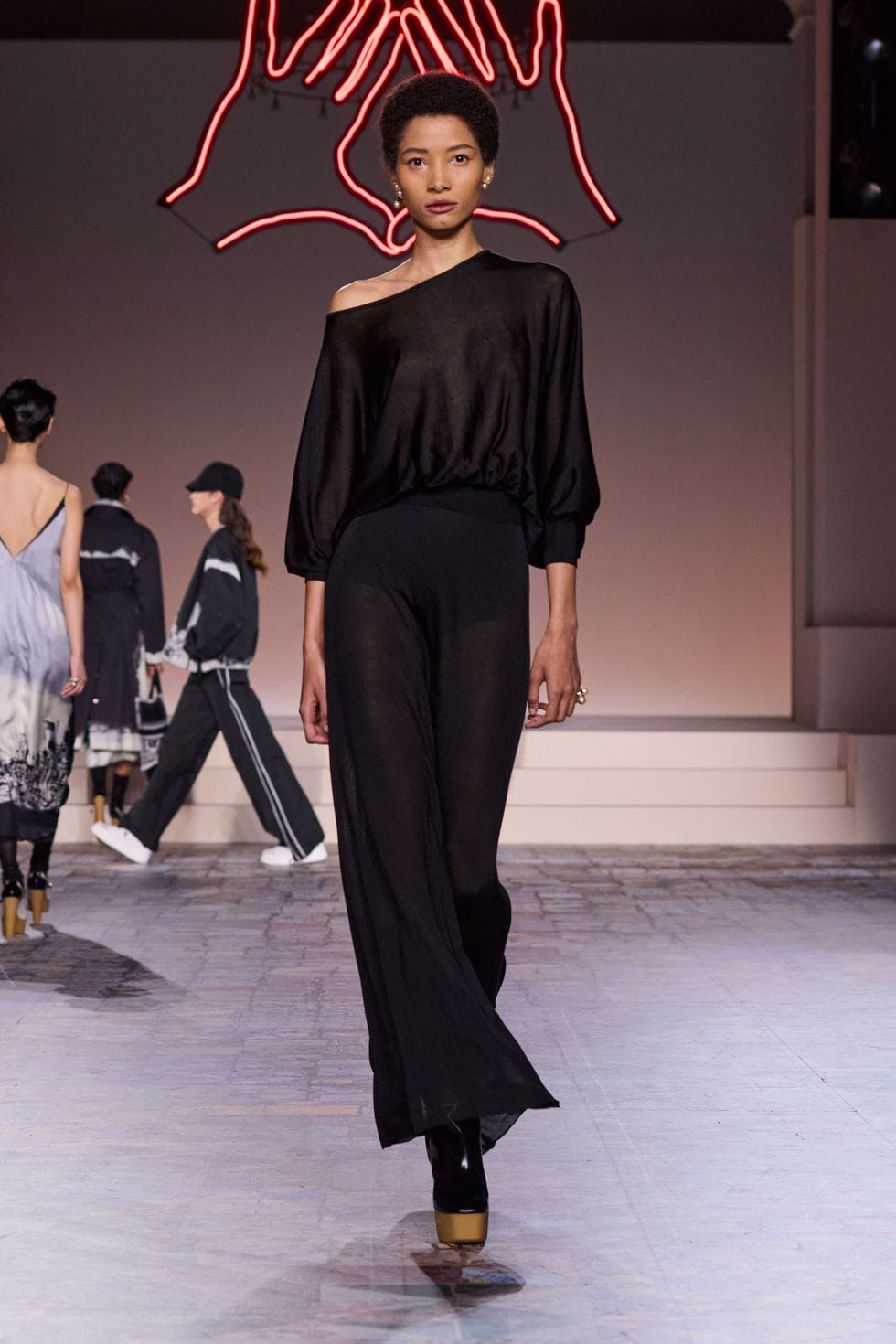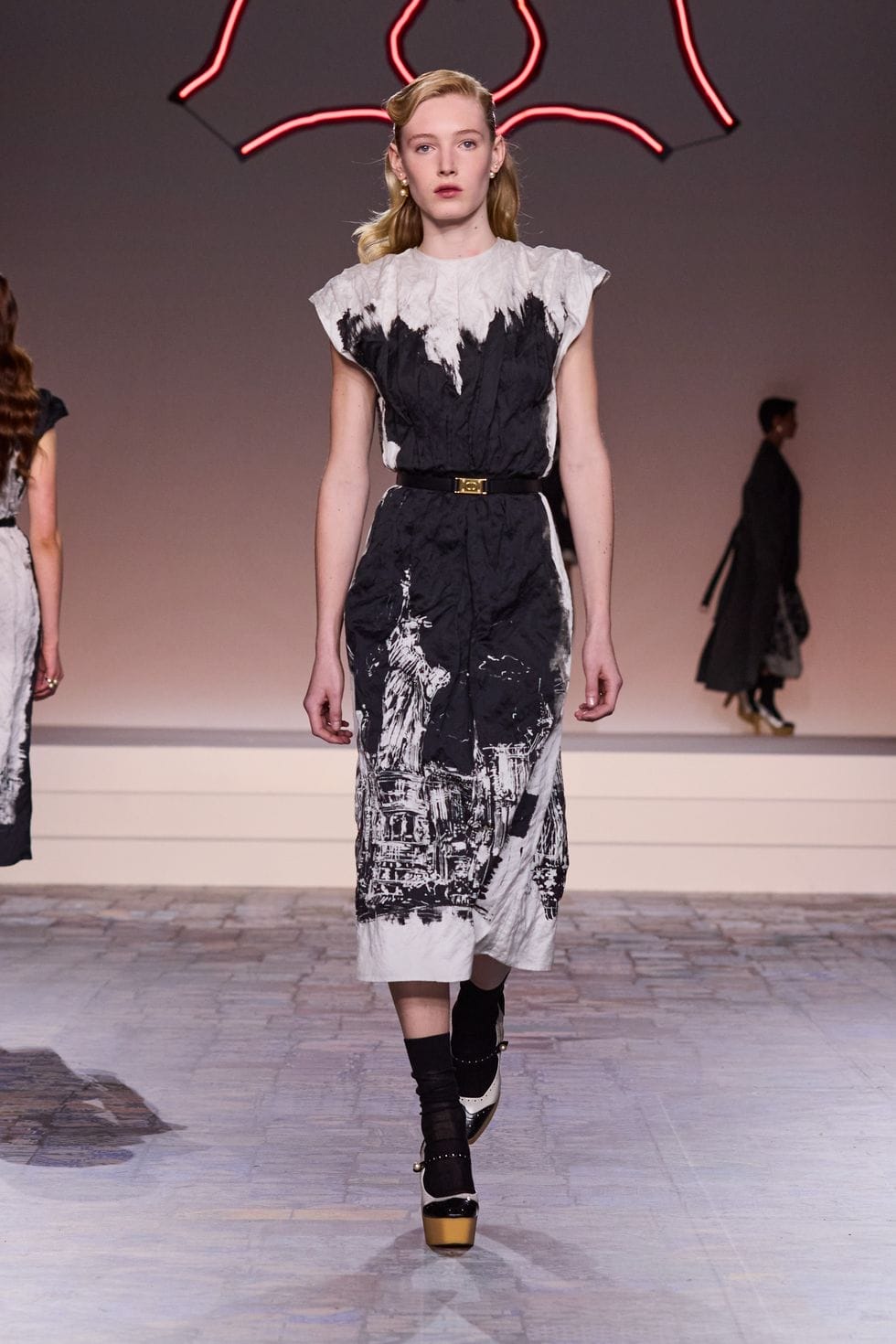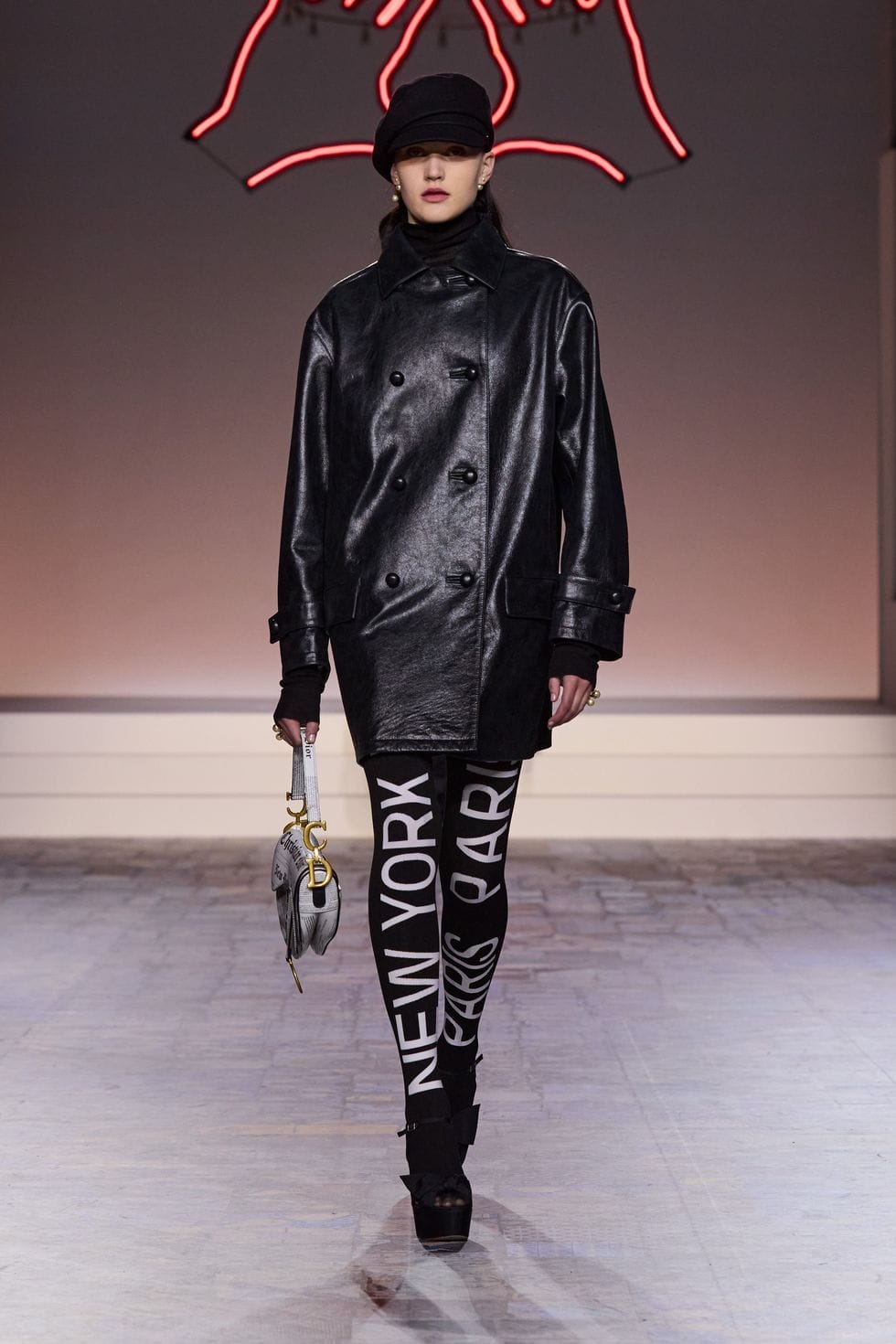Maria Grazia Chiuri staged a powerful, hopeful Pre-Fall 2024 show surrounded by art in the outer borough of New York.
By Brooke Bobb

It was the invasion of the Lady Dior bags at the Brooklyn Museum on Monday night, as the spacious Beaux-Arts Court filled with up with private clients dangling the signature box bags, as well as the brand’s roster of A-listers—Anya Taylor-Joy, Diane Kruger, and Charlize Theron—for Dior’s Pre-Fall 2024 show.
Pairs of neon hands forming diamond shapes hung over the runway. No, it wasn’t an cheeky ode to Brooklynite Jay-Z. These pieces were created for the show by the feminist conceptual artist Claire Fontaine, who is actually the artists James Thornhill and Fulvia Carnevale. In addition to the runway artwork, there was also a piece inside the museum’s main entrance: a slideshow of work from the 1970s by Brooklyn-born artist Suzanne Santoro, exploring the iconography and genealogy of the female body throughout time.

The art was, of course, curated for the occasion by Dior creative director Maria Grazia Chiuri—it wouldn’t be a Chiuri show without it. Blending art and fashion has become one of her hallmarks.
So it’s fitting she chose the Brooklyn Museum as the setting for her first-ever runway show in New York. It’s also where the brand held its annual arts gala and 2021’s behemoth archive exhibition “Christian Dior: Designer of Dreams.” Beyond that, New York City holds a special place in both Chiuri’s heart and Dior’s history. As she wrote on Instagram this past weekend: “Ever since my arrival at Dior in 2016, I have had the dream of presenting a collection in this incredible cultural center. The Brooklyn Museum has been my first stop in every trip to New York for the past eight years.”
In many ways, despite the big-ticket venue, the stars, and the after-party with artist and Sonic Youth alumna Kim Gordon performing, this was a tender moment for Chiuri, and overall, the mood was celebratory and joyous. She has always loved New York personally and creatively, and the connection between the city and the house of Christian Dior has served as a great source of inspiration for her throughout her eight years at the helm.

In this latest collection, several different ideas were at play, but all were anchored by Dior’s connection to the city. In 1948, Monsieur Dior opened his first international ready-to-wear business and called it the Christian Dior New York collection. The designer tailored these clothes to the women of New York specifically, introducing new silhouettes that were less strict and structured, and more in line with the sportswear boom of the time, which coincided with women entering the workforce en masse.
For the updated versions presented last night, Chiuri played with wisp-thin knit and jersey fabrics used in beautiful, fluid long dresses that moved seductively with the models as they walked. There were also trench coats and skirts printed with renderings of the Statue of Liberty and the Eiffel Tower, as well as an ’80s-esque tracksuit paired with a Dior Saddle bag. Both were painted with a mash-up of the American and French flags, a motif originated in 1966 by former Dior creative director Marc Bohan, who died last fall.

Getty Images
In addition to exploring the house’s roots through the cultural lens of the Big Apple, Chiuri also referenced the boyish charms and enchanting spirit of screen legend Marlene Dietrich, which she conjured with short suits, fringy minidresses, tailored jackets, and tuxedo shirts. There were also lovely Old Hollywood–era gowns in rich velvets and silks, some with crystal chainmail too. As is typically the case with Chiuri’s designs, this collection had a feminine bent, held together by a focus on clothes that let their wearers exude unabashed, effortless confidence, whether through the striking palettes of jet black and smoky gray or the sheer fluidity of the fabrics clinging to the body.
Chiuri tends to pull from a multitude of inspirations when it comes to the layers baked into her collections, and this big Brooklyn field trip was no different. She blends ideas, artists, references, and house codes in an effort to say something more, something deeper in her position as one of few women at the top of the luxury fashion ladder. That’s what is more important about her work as a designer, and it can be hard to achieve, considering the commercial demands of a huge luxury fashion machine like Dior.

Heritage and art were at the fore in this collection, and beyond the core New York references, another grounding idea was freedom, best represented in those fantastic jersey and lightweight knit dresses that any woman today—in Paris or New York or anywhere in between—would find strength in, because their construction allows the wearer to embrace her singular shape, curves, and inherent sensuality. Also, these are clothes meant to travel with women in the world, wherever their complex lives may take them. In many ways, Chiuri’s emphasis on freedom in the context of American style is a poignant one, at a time when this country is embroiled in a terrifying election year and women’s rights are under attack. Surrounded by Claire Fontaine’s illuminated hearts, there was so much joy in Chiuri’s interpretations of freedom and a sense of subtle but striking empowerment in the clothes. That’s where Chiuri’s bold artistic vision and artful attention to craft always shine through: in her ability to translate a simple, well-tailored silhouette into something profoundly moving.
– – – – –
This article first appeared on harpersbazaar.com
Runway images courtesy of Dior.



